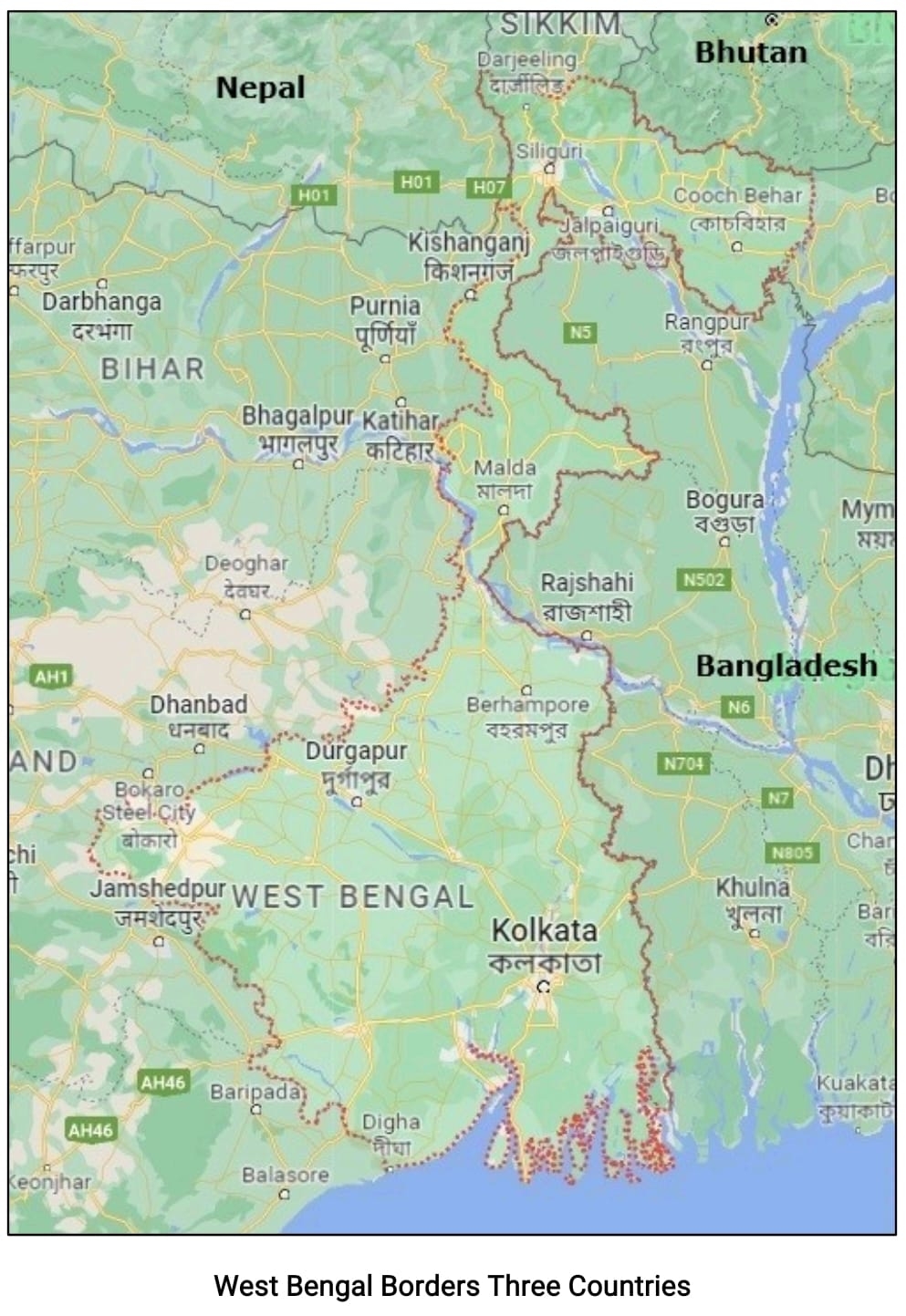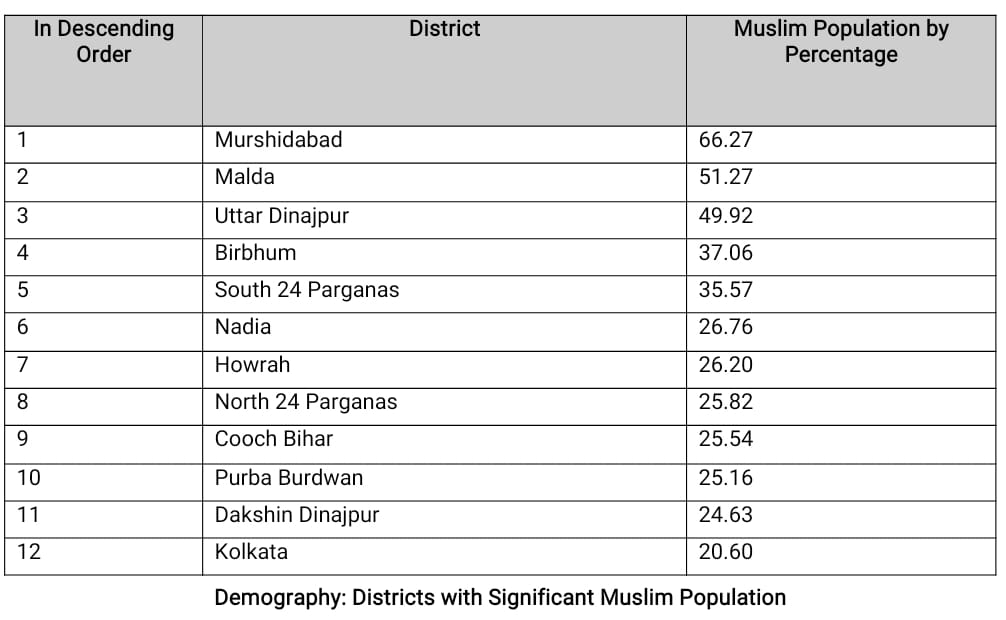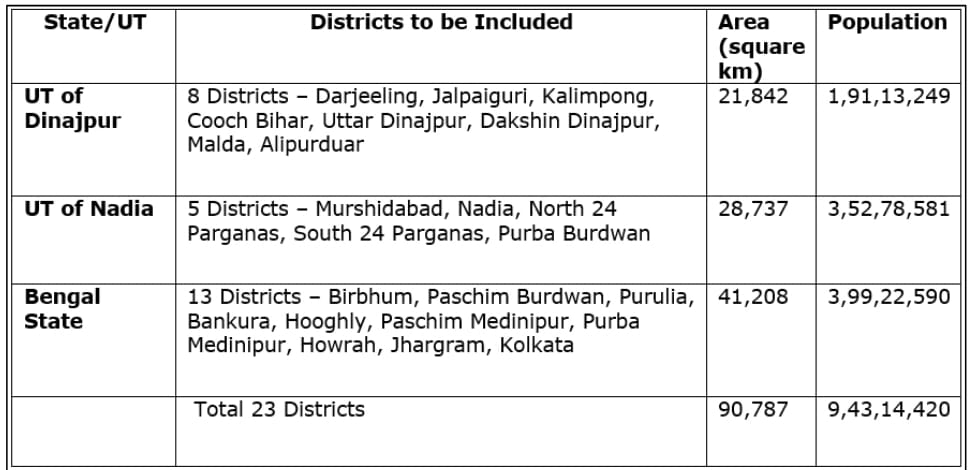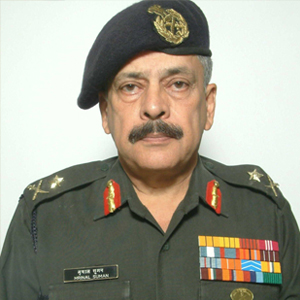West Bengal Needs Surgery
West Bengal, located in the Eastern part of the country, is a strategically important state as it borders three neighbouring countries – Bangladesh, Nepal and Bhutan. It covers an area of 34,267 square km and ranks 13th in the country area-wise.

West Bengal, located in the Eastern part of the country, is a strategically important state as it borders three neighbouring countries – Bangladesh, Nepal and Bhutan. It covers an area of 34,267 square km and ranks 13th in the country area-wise.
The total population of the state is 91,276,115, consisting of 46,809,027 males and 44,467,088 females with a sex ratio of 947. It is the 4th most populous state in the country and has a growth rate of 13.84 percent. The literacy rate is a 77.08 percent.
The state is suffering from three major afflictions.
Illegal Immigration and the Changing Demography
In 2016, Kiren Rijiju, the then Minister of State for Home Affairs, told India's parliament: “There are about 20 million illegal immigrants from Bangladesh in India.” The number has since increased considerably. Rohingya immigrants constitute another big illegal group. Many influential locals act as agents and facilitators. They give them temporary shelter and provide fraudulently obtained Indian identity documents. It is a thriving business with the booty being shared by all.
Whereas a large number of illegal immigrants are smuggled to designated masjids in other states, most illegal immigrants stay on in West Bengal as they find the environment very accommodative. The Muslim population in the State has increased from 19.5 percent in 1951 and 20.5 percent in 1971 to 27.01 percent now. They form a strong and decisive vote bank. Government staff, police officials and the political workers ensure their seamless assimilation. It has caused demographic imbalance in West Bengal. This unprecedented increase in the immigrants’ population in certain areas of the state bordering Bangladesh has become a grave threat to the security of the country. 
Due to organised crime and violence, many local Hindus have been forced to flee from their homes. To escape harassment and persecution, they are forced to sell their properties, farms, orchards and shops to the immigrants at rock-bottom prices, As most of the local police officials sympathise with the immigrants and take their cut from them, they decline to help local Hindus.
In most border areas, the immigrants exercise total control over the local trade and commerce. They own all commercial levers. Masjids and madrasas have mushroomed with the receipt of Saudi funds and donations from Kerala, mostly through hawala routes. Radicalism and fanaticism are rampant. It is often said that another Pakistan is in the making.
Violence and Breakdown of Constitutional Processes
Election time in West Bengal is violence time. Intimidation of the electorate starts from the day the elections are announced. Different tactics are employed by the political parties to deter opponents from filing nominations or voting. The whole electoral process turns into a sham with ‘might-is-right’ ruling the roost.
Post-poll violence after the announcement of State Legislative Assembly results in 2021 shocked the whole country. Voters who had voted for the opponent candidates were targeted and attacked. Many got killed, their houses were burnt and women gang-raped. The may-hem appeared uncontrollable. Hundreds of families crossed over to Assam to escape attacks. The Governor had to summon the top police officials. Calcutta High Court and the Central Government sought detailed reports.
Take the case of the recent Panchayat Polls. Over 160,000 candidates had filed their nomination and around one third got elected unopposed. Their domination of the area generated fear in the minds of likely opponents. They preferred to skip elections rather than face the wrath of the political goons. The culture of political violence is so rampant that dozens of lives have been lost, and the local police is unable to ensure law and order. The Calcutta High Court had to direct the central police forces to handle elections. Even the Supreme Court concurred.
Apparently, the state of West Bengal is afflicted with electoral violence. It is impossible to hold fair and just elections. In other words, there is a total break-down of constitutional processes.
Unbridled Corruption and Smuggling
Indian public has got used to wanton corruption in the political domain. Theft of a few hundreds of crores has stopped making news. However, the sight of stacks and mountains of Rs 2,000 bundles in an obscure flat of a Minister’s associate shocked the nation. It was revealed that the illegal treasure was only a tip of the loot carried out by the alleged Minister and his staff in the recruitment of teachers in government-sponsored and government-aided schools. Investigation had earlier been ordered by the Calcutta High Court.
On 26 December 2021, the Centre Government was forced to stop disbursement of funds for the 100-day job scheme under MGNREGA for malpractices and fund embezzlement by panchayat office-bearers in collusion with contractors. Estimated outstanding dues of workers stand at Rs 2,744 crore.
Under PM Grameen Awas Yojana, gross irregularities had been noted. Instead of the persons entitled for financial assistance for building housing units, the lists finalised by the local officials had the names of political activists and panchayat post-holders who were already owning three-storied pucca houses.
State’s Rs 1,900-cr ‘coal scam’ revealed a devious conspiracy hatched by local bigwigs with the active connivance of government and security functionaries. The accused fraudulently misappropriated coal from ECL's leasehold areas and also from the coal stock stacked in the Railway sidings for sale and supply. The charge sheet filed by CBI has named 41 individuals.
More than 2 million Indian cattle are smuggled to Bangladesh every year. Politicians take the help of corrupt BSF and state officers to run the racket. Bribes are shared by all. It is estimated that every head of cattle generates Rs 10,000 as bribe money. Thus, more than Rs 200 crore of slush money is distributed amongst all the abettors every year.
The above list is not exhaustive. Newer scams are getting unearthed. In addition, Narada bribery scandal (politicians and officials accepting cash bribes in exchange for providing unofficial favours to a company) and Saradha chit fund scam (collapse of a Ponzi scheme run by the Saradha Group), continue to haunt the State.
The Way-out
It is proposed that the state of West Bengal be split into three different entities, as shown in the table below.
a) Union Territory of Dinajpur – consisting of the districts of Darjeeling, Jalpaiguri, Kalimpong, Cooch Bihar, Uttar Dinajpur, Dakshin Dinajpur, Malda and Alipurduar.
b) Union Territory of Nadia – consisting of districts of Murshidabad, Nadia, North 24 Parganas, South 24 Parganas and Purba Burdwan.
c) State of Bengal – consisting of districts of Birbhum, Paschim Burdwan, Purulia, Bankura, Hooghly, Paschim Medinipur, Purba Medinipur, Howrah, Jhargram and Kolkata.
The proposed Union Territory of Dinajpur will also include the area of Gorkhaland Territorial Administration with a population of 8.78 lakh people and spanning an area of 3,304 sq km.
There are three overriding justifications for the proposed trifurcation.
One, in addition to bordering three countries, West Bengal houses the vulnerable Siliguri Corridor, often referred to as the ‘Gateway of Northeast India’. The complete network of road and rail communications that links the north eastern states to India passes through this 60 km long strip of land that is a mere 22 km wide at its narrowest. A number of important military stations are located in this area. The corridor provides combat and logistic support to the troops deployed on the Indo-China border.

Nathu La pass, bordering Tibet, is just 170 km away. Security of the corridor is, thus, of utmost criticality. It has to be kept secure, both against the external threats and internal disruptions by the elements inimical to Indian interests. It is, therefore, essential that the Corridor be ruled directly by the Centre.
Two, the inflow of illegal Bangladeshi immigrants and Rohingyas continues unabated. Eastern districts of West Bengal have become the gateway for their entry into India and further movement to other states. Around 40,000 Rohingya are reportedly living in places as far from the border as Jammu, Hyderabad and Delhi.
In addition to being a drain on the Indian economy, the illegal immigrants are a potent threat to Indian security. Most of them have been radicalised and do not believe in secular living. To them, religion takes precedence over every other consideration, including loyalty to the country. They are like a dormant volcano that can erupt on the smallest of religious issues and engulf the whole state of West Bengal, with far-reaching impact on the rest of the country as well.
As the illegal immigrants constitute a decisive vote bank, political parties are averse to putting a stop to their ongoing influx. In fact, all support and facilities are provided to them. They are settled on government/forest lands and provided with identity papers to avail the social security benefits.
Finally, West Bengal as a state has become a laggard. Industries have been quitting and there is no new investment. Unemployment is widespread. Infrastructure is crumbling. Gangs of goons are controlling the countryside and settling their scores with firearms and bombs. Violence is rampant. In short, there is complete anarchy. The situation is explosive and beyond the control of the State government. Calcutta High Court has often been forced to remind the State government of its obligations.
Therefore
Situation in West Bengal is grave and the Centre government has to step in and take charge. It cannot justify abdication of its responsibility under the excuse of constitutional minutiae. Challenging circumstances demand drastic remedies. The Centre cannot be a mute spectator when the state of West Bengal is heading for the precipice. There is a complete breakdown of the state institutions. It is certainly a tinderbox situation that has the potential of plunging the country into strife and violence. It has to be nipped immediately – it is already very late.
As suggested above, the only viable solution is to split the state into three separate entities. Siliguri Corridor is gravely vulnerable to anti-national elements and must be a part of the union territory. Similarly, areas bordering Bangladesh must be ruled by the Centre directly.
History never remembers those leaders and rulers who pass their tenure in routine governance. Only bold and dynamic leaders leave their stamp for posterity, as witnessed in the case of abrogation of Article 370. West Bengal is yet another challenge for the current leadership. Undoubtedly, it is a tall order, but then, strong measures can never be initiated by the weak and the timid.

Major General Mrinal Suman


